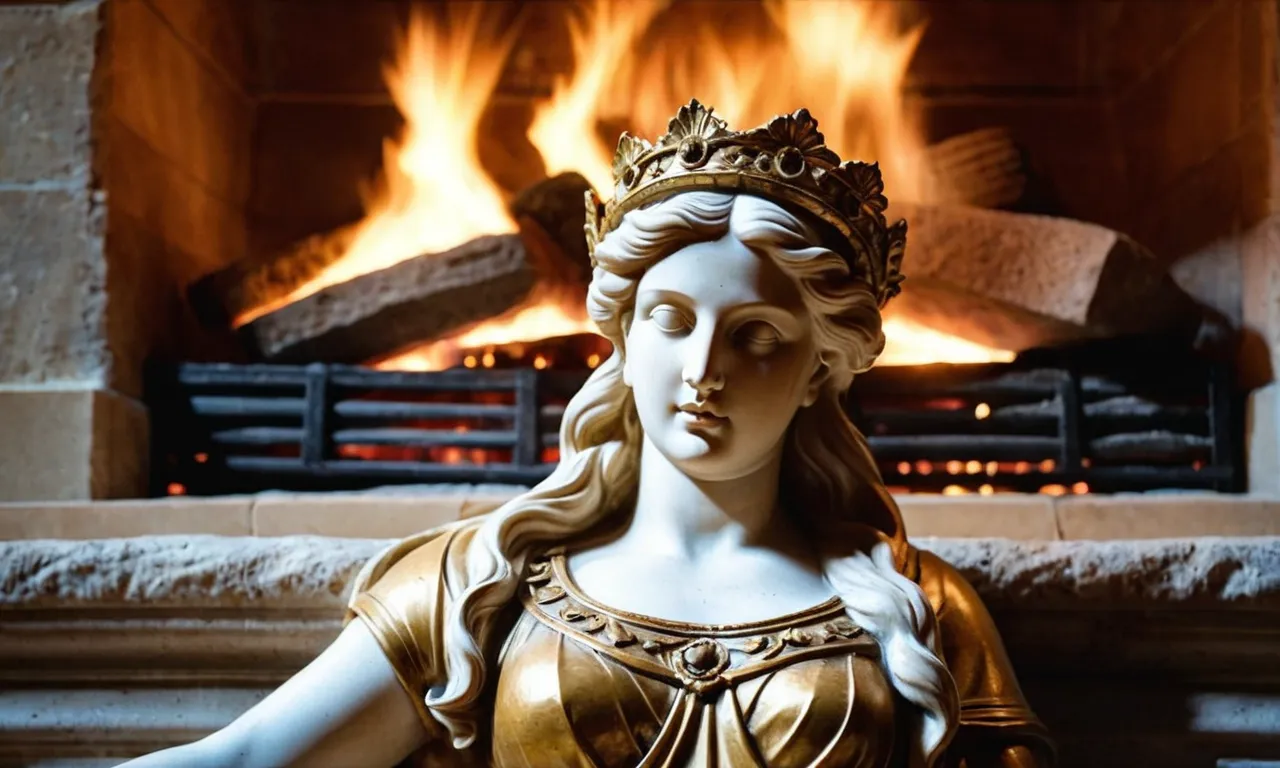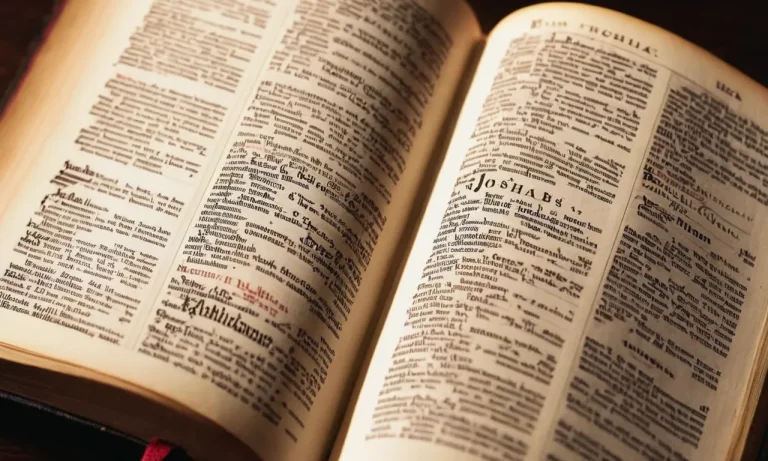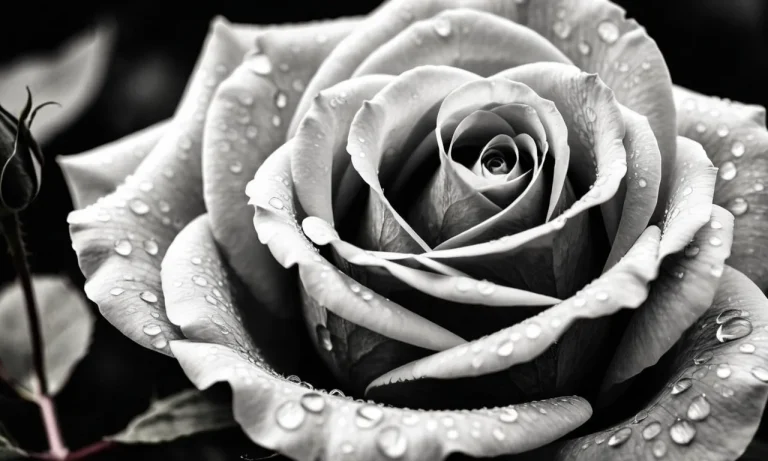What Is Vesta The Goddess Of? A Deep Dive Into The Ancient Roman Goddess
The nature of ancient Roman and Greek gods can be obscure in the modern day. But if you’ve ever wondered “what is Vesta the goddess of?” you’ve come to the right place. In this deep dive article, we will uncover who Vesta was, what she represented, how she was worshipped, her key symbols and attributes, and how her cult lasted for over 1000 years in Ancient Rome.
Vesta was one of the most important goddesses in Ancient Rome, presiding over the sacred fire and home hearth. She was the virgin goddess of the hearth, home, domesticity, family, and ritual.
Who Was Vesta in Ancient Rome?
Vesta’s Origins and Family
Vesta was one of the most important goddesses in ancient Roman religion. She was the virgin goddess of the hearth, home, and family. Her origins can be traced back to the Proto-Indo-European dawn goddess Hausos, indicating she was likely worshipped in Italy since prehistoric times.
Vesta was the daughter of Saturn and Ops, and sister to Ceres, Jupiter, Neptune, Pluto, and Juno. As a child, she was hidden from her father Saturn who was in the habit of eating his children. She avoided this fate by being secreted away and replaced with a stone to be consumed instead.
Her survival allowed Vesta to come into her own as an influential goddess.
Vesta’s Appearance and Personality Traits
Vesta was often depicted as a modest, dutiful goddess. She dressed plainly with her head covered, reflecting her chaste nature. Artworks sometimes showed her holding a lamp, ceremonial rod, or a platter of sacred cakes offered to the gods.
Personality-wise, Vesta embodied values like chastity, family, and dedication to keeping the sacred hearth fires burning. The hearth fires represented the security and survival of Rome itself. As a protector of home life, Vesta cared deeply about morality and tradition.
Breaking vows related to her domain were grounds for severe punishment.
Vesta was also associated with community. Her flame connected citizens and kept people warm and nourished. Vestas’ vestal virgins faithfully maintained her temple and its eternal fire for centuries. Their devotion highlights just how cherished Vesta was in Roman society.
What Was Vesta the Goddess Of?
Goddess of the Hearth and Home
Vesta was the ancient Roman goddess of the hearth, home, and family. She was the protector of the home and symbolized the fire burning at the center of the household. As goddess of the hearth, Vesta was associated with domestic activities like cooking, baking, and weaving.
Her domain extended to the community hearth and kitchens as well. The Vestals, her virgin priestesses, maintained the sacred fire at the Temple of Vesta in the Roman Forum which was considered the public hearth of Rome.
The hearth represented the heart of the Roman household both literally and figuratively. It provided warmth, light, and was used for cooking food. As the divine guardian of this vital center, Vesta protected the home from harm.
Her hearth cult connected each household to the larger community and metaphorically kept the flame of Rome burning.
Guardian of the Sacred Flame
As goddess of the hearth, Vesta was closely associated with fire. She was the guardian of the Sacred Flame that burned inside her temple in the Roman Forum. Maintaining this perpetual fire was one of the primary duties of her priestesses, the Vestal Virgins.
It was kept alight at all times and was a symbol of Rome’s continuance. If the flame was extinguished it was thought to signal disaster for the Roman state.
The Vestals carefully tended the flame, adding ritual offerings of oil and kindling. Its continued burning was a good omen and thought to maintain Rome’s safety and prosperity. The temple housed no statue of Vesta herself to emphasize the supremacy of the Sacred Flame as her living presence and divine force.
Patroness of Bakers and Millers
As goddess of the hearth and home, Vesta’s domain extended to activities like cooking, baking, and milling of grain. Ovens and mills were powered by fire at the time so Vesta also became associated with bread-making and the milling trade. Bakers and millers honored her as their patron goddess.
Food preparation formed an integral part of the domestic sphere overseen by Vesta. Milling grain to produce flour and baking bread were essential daily tasks in each household. Vesta’s protection of the hearth fire allowed these activities to be successfully carried out.
Offerings of salt cakes and other baked foods were made to Vesta before and after preparing a meal. She was honored for her role in facilitating the baking process.
Vesta’s association with grain and bread-making also connected her to the agricultural cycle and fertility of the land. Her worship thus tied together the home, the community, and the bounty of the natural world that sustained them both.
How Was Vesta Worshipped in Ancient Rome?
The Temple of Vesta and Vestal Virgins
The most renowned institution devoted to the goddess Vesta in ancient Rome was the Temple of Vesta, located in the Roman Forum. This sacred circular temple was the hub for Vesta’s priestesses known as the Vestal Virgins.
According to legends, the Vestal Virgins tended the temple’s sacred fire at this site since its establishment by Numa Pompilius, the second king of Rome in 715 BC (World History Encyclopedia).
The Vestals, initially comprised of two to four priestesses, eventually expanded to six devotees who served the goddess for 30 years. These women held enormous prestige and influence in Roman religion and politics. Their main duty was tending to Vesta’s perpetual flame.
If the sacred fire extinguished, it was considered an omen of ill fate for Rome (ThoughtCo).
Vestalia – The Roman Festival for Vesta
The key religious observance honoring Vesta occurred yearly on June 9th, known as the Vestalia. During this festival, her temple was opened to matrons of the city who walked barefoot wearing simple attire. The female worshippers brought offerings of food cooked in clay pots to the goddess.
Millers also honored Vesta since grain was stored in her temple (Brewminate).
The Vestalia concluded with temple cleansing rites after the Vestal Virgins ritually swept out the temple on June 15th. This act symbolized purification given Vesta’s connection to cleanliness of hearth and home in Roman lore (ThoughtCo).
Household Shrines to Vesta
Besides the renowned Temple of Vesta manned by her devoted priestesses, the goddess was also worshipped via small home shrines present in most households across Rome. These sacred areas known as a Lararium often featured a small statue of Vesta along with other deities guarding the house (Brewminate).
Given Vest’s intimate connection with hearth and home, such Lararium shrines amplified her significance in the Roman domestic sphere. Members of the household offered small daily prayers and food offerings to Vesta at these home altars along with celebrations in her major festivals.
Key Symbols and Offerings for Vesta
Fire and Hearth
As the goddess of the hearth, Vesta was strongly associated with fire and the home. The Vestal Virgins kept a sacred flame burning in Vesta’s temple at all times, symbolizing the hearth fire that was essential to Roman households.
This eternal flame represented the security and continuity of Rome and was never allowed to go out. If it did, it was seen as an omen of bad luck for the city. The hearth was the center of the Roman home, so Vesta’s domain extended to the home and family as well.
The Palladium
According to legend, the Palladium was a wooden statue of Pallas Athena that was housed in Vesta’s temple. It was said to have been brought by Aeneas from Troy and kept safe by the Vestals. The Palladium was believed to protect Rome as long as it remained undisturbed.
Some myths say the statue fell from the heavens and was found by the early settlers who went on to found Rome. The Palladium thus linked Vesta to the origins of Rome and embodied the security of the city.
Food, Wine and Incense
As offerings to Vesta, her worshippers would present food, wine, incense and other sacrificial offerings. Food represented Vesta’s connection to household provisions and nourishment. Spelt (an ancient grain), salt, and living animals like calves and lambs were often sacrificed.
Wine and incense symbolized celebration and reverence. Vesta’s festivals like the Vestalia often involved preparing ritual breads and food. Donkeys were sometimes sacrificed as they were associated with mills and the grinding of grain used in baking bread.
Donkeys
Donkeys had a special symbolic connection to Vesta because of their use in milling grain. Turning millstones to grind grain into flour for bread was considered a duty of respectable matrons in Roman households.
So the donkey was seen as a humble beast of burden who helped provide an essential food staple. Killing the donkey may have represented destroying the means of food production. The flour and bread were then offered to Vesta, completing the cycle.
Interestingly, during the Vestalia festival, millstones were decorated with wreaths and Vestal Virgins would make dough using a special grindstone in Vesta’s temple.
Vesta’s Legacy and Influence
Lasting Worship for Over 1000 Years
The Roman goddess Vesta was worshipped for an extraordinarily long time – over a millennium! Her temple in the Forum Romanum was one of the most sacred sites in Ancient Rome and housed the eternal flame tended by the Vestal Virgins.
The temple was constructed in the 7th century BCE and worship of Vesta continued until 394 CE when it was finally abolished by Christian Roman emperor Theodosius I. That’s over 1000 years of devotion to the goddess!
Vesta was so revered that her votive festival, the Vestalia, was celebrated every year on June 9th. During the Vestalia, her temple was ritually cleaned and the sacred objects inside were renewed. The Vestal Virgins played a major role in these rites.
The Vestalia was the only time when married women were allowed to enter Vesta’s temple – a sign of how she was associated with the Roman household. The festival continued to be observed until the end of the 4th century CE.
The Vestal Virgins were Vesta’s priestesses and their order endured for about 1000 years until it was disbanded by Emperor Theodosius I in 394 CE. They were considered extremely holy figures in Roman society.
The privileges afforded to them, like the right to pardon condemned criminals once a year, demonstrate how esteemed they were. Vesta’s eternal flame in the Forum was extinguished around the same time, marking the final end of her millennium-long worship.
Influenced Hearth Goddesses in Other Cultures
As the Roman empire expanded across Europe, Vesta’s image and attributes influenced hearth goddesses in other pagan religions. She was equated with Brigantia, a Celtic goddess who protected the home. Statues combining the iconography of both goddesses have been discovered.
Vesta was also conflated with the Greek goddess Hestia, who fulfilled a similar domestic role. There are inscriptions where Vesta is referred to as Vesta-Hestia due to their similarities.
Vesta’s association with the home and family meant that she continued to be revered even after Rome adopted Christianity. Folk veneration of Vesta as the hearth goddess lived on for centuries in parts of Europe that had once been Roman.
In Italy, she evolved into Saint Vesta, a Christianized remnant of the ancient goddess. The eternal flame tended by the Vestals transformed into candles kept burning in Italian homes in honor of Saint Vesta.
Archaeological evidence demonstrates Vesta’s wide influence. Temples and shrines dedicated to Vesta by Romans have been found as far away as Turkey, North Africa, and Britain. After the rise of Christianity, hearths and kitchens were still seen as sacred spaces in many European households.
The prominence of the hearth is a testament to the ancient and enduring legacy of the goddess Vesta, protector of home and family.
Conclusion
As we’ve explored, Vesta was one of the most significant goddesses in Ancient Rome for over a millennium. She protected the flame at the heart of Rome itself. Vesta represented domestic life, ritual purity, and the warmth at the center of every Roman house.
Even today, Vesta lives on in hearth goddesses across cultures and traditions worldwide.
So next time you light a candle, tend a cozy fire, or gather your loved ones together, you may be honoring Vesta’s spirit of home and family without even realizing it.








